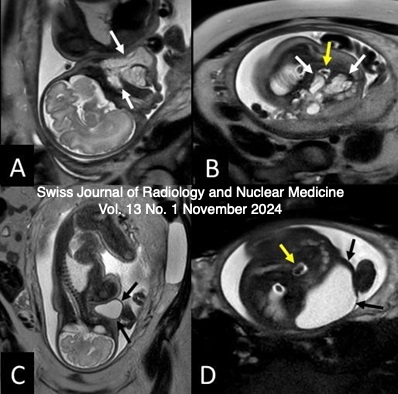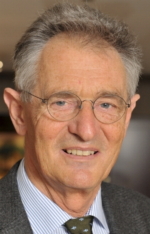About the Journal
Swiss Journal of Radiology and Nuclear Medicine (SJORANM) is an open access, peer-reviewed international journal that accepts for review any original scientific work in the fields of radiology and nuclear medicine.

Dear Readers and Authors of the Swiss Journal of Radiology and Nuclear Medicine,
As the year 2024 draws to a close, we would like to take this opportunity to pause and reflect on the past months together. It has been a year filled with challenges and advancements in Radiology and Nuclear Medicine, marked by scientific innovations and clinical achievements.
During this festive time of year, we would like to express our sincere gratitude for your continuous support and dedication. Your contributions and interest have been instrumental in ensuring that our journal remains a platform for outstanding research and the exchange of knowledge.
The Christmas season is a special time to gather with family and friends, share joy, and recharge for the year ahead. We hope that you can use this time to relax and enjoy the company of your loved ones.
For the new year 2025, we wish you health, happiness, and success. May it be a year in which you achieve your personal and professional goals and continue to contribute to the advancement of Radiology and Nuclear Medicine.
We look forward to working with you in the coming year and shaping the future of our field together. Your ideas, research, and dedication are the key to our shared success.
In this spirit, we wish you and your families a Merry Christmas and a happy, successful New Year!
Warm regards from your editorial team
Current Issue

Lymphatic Malformations
Vascular anomalies correspond to a group of lesions related to disorders of vascular develop- ment, which to date remain a diagnostic and therapeutic challenge for treating physicians. Lymphatic malformations (LM) are congenital malformations that manifest as benign hamartomatous tumors of the lymphatic vessels with a marked predilection for the head, neck and oral cavity. In general terms, LM are classified as macrocystic, microcystic or a combination of both depending on the size of the lesion, which can lead to anatomical alterations and even functional deficits. The aim of this article is to provide a brief and accurate review of head and neck lymphatic malformations considering their clinical aspects, imaging tools and treatment options.
-------------------------
Navigating complexity: A pictorial representation of anomalous pulmonary venous connection classification in the pediatric population with volume rendering and multiplanar imaging technique
Anomalous pulmonary venous connections represent a heterogeneous group of congenital heart diseases in which a part or all of the pulmonary veins drains into the right atrium instead of draining into the left atrium. Pulmonary venous anomalies can manifest as partial or total anomalous drainage due to the abnormal embryological development. Multidetector CT angiography, with its multiplanar reformatting and volume rendering techniques, precisely offers the information about the three-dimensional anatomy and spatial relationships of the cardiovascular structures. Clinical features of anomalous pulmonary venous connections may be silent or have variable features like neonatal cyanosis, volume overload, and pulmonary arterial hypertension due to the left-to-right shunt, which are often associated with other congenital cardiac disease, so that accurate diagnosis is essential for treatment planning.
-------------------------
Denosumab-Induced Osteonecrosis of the Jaw with FDG PET/CT Imaging Features
Denosumab is a monoclonal antibody that inhibits receptor activator of nuclear factor-kappa B ligand (RANKL), which plays a crucial role in osteoclast formation, function, and survival. By blocking RANKL, denosumab helps prevent bone resorption, making it an effective therapeutic option for managing conditions associated with bone metastases and osteopenia, such as in patients with lung cancer. Lung cancer, particularly non-small cell lung cancer (NSCLC), often metastasizes to bones, and denosumab is commonly used to reduce the incidence of skeletal-related events (SREs) in these patients. However, denosumab therapy is not without its risks, and one of the most significant side effects is osteonecrosis of the jaw (ONJ), a potentially debilitating condition characterized by bone exposure and necrosis, typically following dental extractions or trauma
Research Articles
SJORANM Editorial Board members oversee the peer review process for the journal, including evaluating submissions, selecting reviewers and assessing their comments, and making editorial decisions. Together with Advisory Editorial Board Members they are involved in the development of journal policies and ethics standards and work to promote SJORANM mission to provide resources, support and advice for early stage researchers in their journey from writing to publishing their scientific papers while at the same time making free public access to scientific research. Note: The editorial board screens for plagiarism before starting the review process.
This journal does not charge any fees for publishing an article (No APCs!)


Prof. Dr. med. Gerd Nöldge Prof. Dr. Dr. med. Johannes Heverhagen
Editor-in-Chief Editor


Prof. Dr. med. Dr. rer. nat. Reinhard Loose Dr. med. Frank Mosler
Associate Editor Associate Editor


Prof. Dr. Dr. med. Martin H. Maurer PD Dr. med. Jasmin Busch
Associate Editor Associate Editor










